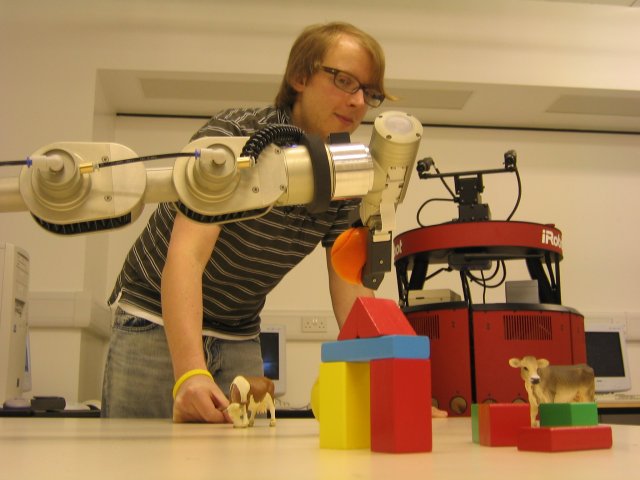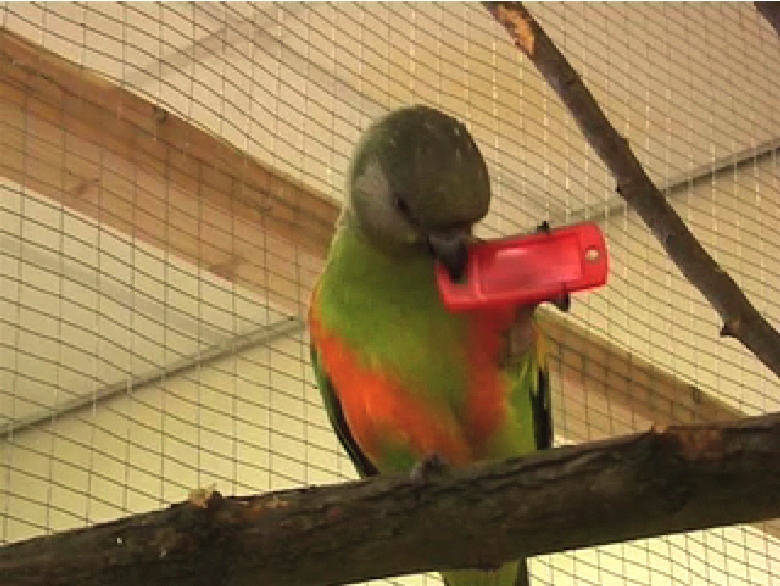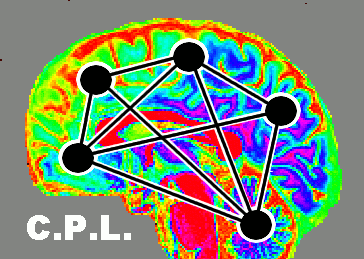















EXAMPLES OF TYPES OF INSPIRATION FROM AI TO BIOLOGY
Expanded version of list of examples included in proposal for
symposium.
(Illustrative, but not definitive, and likely to be extended.)
Examples of AI-Inspired Biology suitable for this symposium could include:
o Investigating aspects of the environment that are challenging for current
robots, and using the analysis of those challenges to inspire more detailed
research on how animals of various sorts overcome the challenges.
o Taking solutions that have been developed in engineering contexts and
investigating whether they can provide models for how natural systems work.
An example might be investigating the conjecture made here
that
Biological evolution "discovered" problems in complex control mechanisms
that require virtual machines for their solution long before human
engineers did, and developed more complex and sophisticated solutions
involving virtual machines than human engineers have so far.
o Taking models/theories that have been developed by biologists, psychologists,
etc. and analysing gaps and problems that emerge when attempts are used to derive
designs for working systems, possibly leading to revisions of the original
theories.
o Using design-based analyses of natural behaviours to suggest new specific
theories about detailed requirements that could have driven evolutionary and
developmental processes, and working out implications of those requirements for
the biological mechanisms. (E.g. could such and such a problem be solved without
doing a search in a space of branching futures? Or without building structured
representations of objects and processes in the environment? Or without reasoning
about what processes and actions are possible in a situation and what constrains
those possibilities?)
o Analysing the kinds of information that organisms need in order to produce some
of their behaviours and investigating possible mechanisms for acquiring and using
that information -- e.g. information about what information is not yet available,
information about how to get missing information, information about the plans or
intentions of other individuals, etc.
o Using work on requirements and designs for systems that perform in ways that
various animals do to pose problems and challenges for theories of the evolution
of cognition, or the epigenesis of cognition.
o Producing comparative analyses of the requirements related to the environmental
constraints and the competences of different species in order to survey the range
of possibilities for different designs that could have developed in organisms,
moving towards a more general theory of types of information-processing
architecture, types of mechanism, types of representation than AI researchers
normally propose when they offer specific theories.
o Analysing implications of such research for the evolution of possible
precursors to human language, including not only behavioural precursors concerned
with communication of various forms, but internal mechanisms and forms of
representation involved in perception, learning, planning, and acting, that serve
non-communicative functions found in pre-verbal humans and in other animals.
(E.g. how many animals need and use forms of representation that support
compositional semantics in a formalism that supports composition? What sorts of
composition would suffice for those behaviours, e.g. logical, pictorial,
superposition of neural processes ...?)
o Analysing requirements, from an AI standpoint, for meta-semantic competences in
organisms, i.e. competences involving the representation not only of structures
and processes in the environment, but also the representation of other
individuals that acquire, manipulate and use information. What are the
implications for animals that need to perceive, learn about, and take account of
the cognitive competences of other individuals, or their own mental processes?
o Starting from the observation that humans and some other animals have the
ability to extend or improve their cognitive competences in various ways (e.g.
extending or debugging their ontologies, the forms of representation used, their
kinds of self-knowledge, their forms of reasoning, their theories about the
environment, their information-processing architectures, and others), can
attempts by AI/robotics researchers to formulate requirements or designs for
working models of those processes (as in the CogX project http://cogx.eu)
generate new research questions for psychologists, neuroscientists or biologists,
e.g. about the precise forms of extension found in various species, about how
those could be modelled, about how they evolved, etc.?
o Discussing implications of the above for other disciplines, including
biological sciences (ethology, genetics, epigenetics, developmental biology,
etc.), psychology (including developmental psychology, cognitive psychology,
studies of perception, learning, problem solving, action, etc.), linguistics,
philosophy, ...
o Showing how such research on AI-inspired biology can have a feed-back effect,
leading to new advances not only in biology, but also in AI, including robotics,
and philosophy.
o Illustrating two-way influences.
Two separate influences from Biology that are important for AI illustrate
the need to combine different kinds of information in solving problems or
forming percepts, without which simple AI techniques fail. For example,
(a)reflections and specularities (highlights) can defeat standard stereo
vision algorithms, but help humans see surface structure, and (b) attempts
to make machines recognise colours on the basis of wavelengths associated
with image regions fail to explain colour constancies, and pictures that
generate colour illusions. These phenomena (and many more) suggest that
effective (human-like) vision requires mechanisms that can do multiple
(soft) constraint propagation from different sources of knowledge.
Work in AI has developed constraint propagation mechanisms to address such
problems and it seems likely that attempts to deploy them in
multi-functional vision systems will pose new research questions for
psychologists and neuroscientists studying vision.
o Demonstrating how environmental requirements could influence evolution of
architectures, forms of representation, or motivational mechanisms used in
animals.
More specific questions:
o Can we use AI to extend/revise work done by Piaget and his followers, and drive
new experimental developmental psychology?
o What current research, e.g. on cognition in primates and birds, is ripe for
injection of ideas and problems from an AI standpoint?
o What are the problems genetic theory needs to address in order to help us
understand the altricial-precocial spectrum -- of competences or species?
[Sloman&Chappell, IJCAI 2005, IJUC 2007] E.g. how can genes encode the rich
precocial competences of many species (e.g. deer running with the herd very soon
after birth), and how can they encode the more abstract "meta-competences" that
allow a developing organism to find out what it needs to learn, how it can learn
those things, and later to learn them, even if none of its ancestors learnt them
(e.g. human toddlers learning to play computer games).
o If humans cannot learn mathematics without being taught, who taught the first
mathematicians? (This could link up with the symposium on mathematical cognition,
if that proposal is accepted.)
o Are there non-communicative precursors to human language that have been ignored
by researchers working on evolution of language?
o What are the really hard unsolved problems regarding forms of representation,
ontologies, mechanisms, architectures, types of development, types of learning,
... that require advances in our understanding of both natural cognition and AI?
o Do all motives have to be reward-based?
Guidance on reviewing priorities for the symposium.
Last updated: 2 Nov 2009
Installed: 30 Jul 2009
Maintained by
Aaron Sloman
School of Computer Science
The University of Birmingham